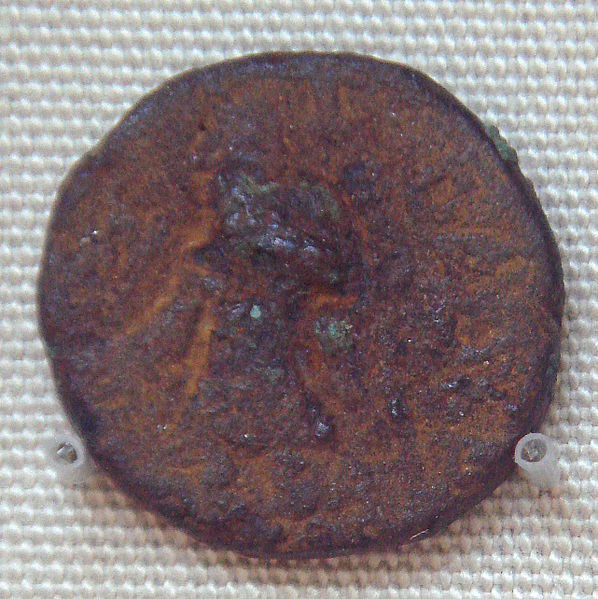Kanishka I, Kanishka or Kanishka the Great was an emperor of the Kushan dynasty, under whose reign the empire reached its zenith. He is famous for his military, political, and spiritual achievements. A descendant of Kujula Kadphises, founder of the Kushan empire, Kanishka came to rule an empire extending from Central Asia and Gandhara to Pataliputra on the Gangetic plain. The main capital of his empire was located at Puruṣapura (Peshawar) in Gandhara, with another major capital at Mathura. Coins of Kanishka were found in Tripuri.
Gold coin of Kanishka. Greco-Bactrian legend: ϷΑΟΝΑΝΟϷΑΟ ΚΑΝΗϷΚΙ ΚΟϷΑΝΟ Shaonanoshao Kanishki Koshano "King of Kings, Kanishka the Kushan". British Museum.
The Kanishka statue in the Mathura Museum. There is a dedicatory inscription along the bottom of the coat.
Probable statue of Kanishka, Surkh Kotal, 2nd century CE. Kabul Museum.
Bronze coin of Kanishka, found in Khotan, modern China.
Bactrian is an extinct Eastern Iranian language formerly spoken in the Central Asian region of Bactria and used as the official language of the Kushan and the Hephthalite empires.
Bactrian language
The Rabatak inscription is an inscription written on a rock in the Bactrian language and the Greek script, which was found in 1993 at the site of Rabatak, near Surkh Kotal in Afghanistan. The inscription relates to the rule of the Kushan emperor Kanishka, and gives remarkable clues on the genealogy of the Kushan dynasty.
The Surkh Kotal inscription (SK4) is the first known substantial document written in Bactrian, an Iranian language. It uses the Greek script. It was written at the time of the Kushan ruler Huvishka, 2nd century CE. Kabul Museum.
The Hephthalites used the Bactrian script (top). Here, their endonym Ebodalo (ηβοδαλο), "Hephthalites".








